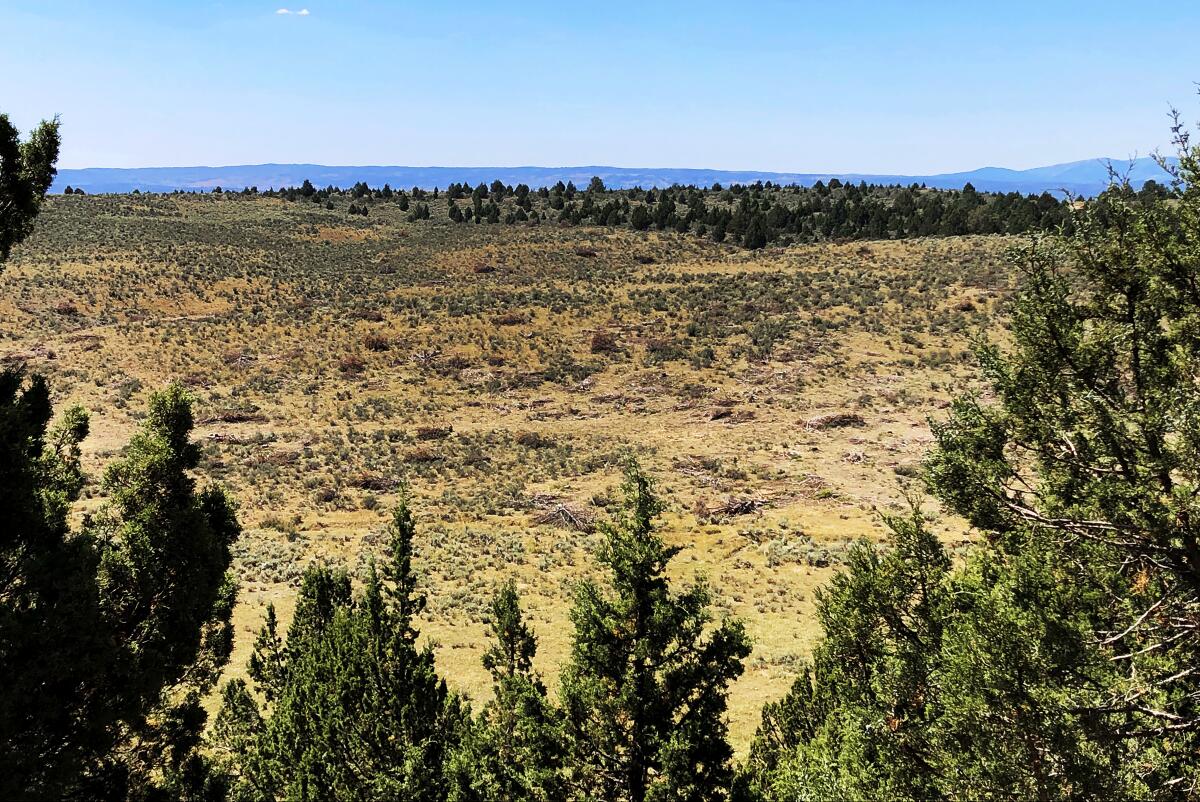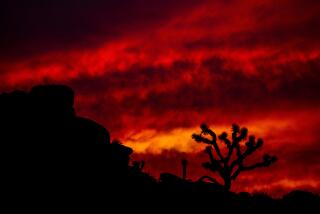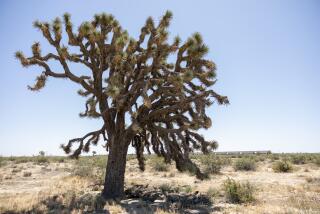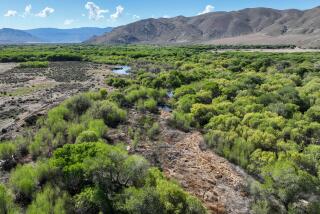Op-Ed: Pinyon and juniper woodlands define the West. Why is the BLM turning them to mulch?

The federal government is overseeing a program of massive deforestation on Western public lands. Some 7.4 million acres of pinyon-juniper forest in the care of the Bureau of Land Management in Nevada, Utah and southern Idaho are targeted for destruction over the next several years — an area larger than the state of Vermont.
Why wipe out millions of acres of thriving pinyon-juniper, trees that are superbly adapted to the heat and drought that climate change will throw at the West? To satisfy the demands of the cattle industry for grazing forage on public lands.
The BLM couches the deforestation as environmentally friendly. The agency claims that erasing large swaths of pinyon-juniper will cut down on fires and create new habitat for the endangered greater sage grouse, a ground-nesting bird whose dwindling numbers in recent years have provoked momentous debates on how to manage public lands. It even claims that destroying pinyon-juniper forest will restore it.
Yet there is little clear evidence showing long-term increases in sage-grouse populations following pinyon-juniper removal. In fact, what happens to wildlife when these forests are cut down, mulched or burned has simply not been researched well enough to allow for definite conclusions, according to a 2016 study out of Colorado State University.
What is certain is that pinyon-juniper woodlands are the signal forest of the Colorado Plateau and the Great Basin. These are old-growth trees, squat and humble, gnarled with many hundreds of years of survival in the extreme cold and heat of the arid West. The trees are the green blanket of sweet-smelling conifers across the uplands of the high desert, contrasting starkly in color and form with the sagebrush plains in the valleys.
Pinyons are the source of pine nuts, a staple of indigenous people in the region. John Muir, traveling across Nevada in 1879, observed that the “entire state seems to be pretty evenly divided into mountain ranges covered with nut pines and plains covered with sage — now a swath of pines stretching from north to south, now a swath of sage.”
Some pinyon pines alive today have been dated to the Renaissance. Junipers can live up to 1,600 years. Despite their age and the rough beauty that comes with it, these are largely uncelebrated forests. Junipers and pinyon pine don’t figure in famous folk songs or have their own national park like redwoods and giant sequoias.
In springtime, though, the pinyon-juniper biome is full of song, providing refuge for kestrels and hawks, mountain chickadees, black-throated gray warblers, flickers, gray flycatchers, scrub jays, pinyon jays and poorwills. By the count of the Rocky Mountain Bird Observatory, pinyon-juniper forests host more than 70 species, which more than ever need healthy habitat as North American bird populations collapse.
In May of 2018, I got a chance to see what the deforestation program amounted to on the ground. I was hiking in the Egan Range, south of Ely, Nev., with a Great Basin biologist named Katie Fite, into a stand that was marked for destruction by a machine called a Bull Hog.
A Bull Hog is a bulldozer with a spinning bladed cylinder on the front end. It knocks down and chews up everything in its path. In the space of an hour, the machine eradicated an acre of pinyon-juniper. The Bull Hog, its every square yard of devastation paid for by taxpayers, spit out shattered trunks and limbs and the nests of birds, leaving the landscape flattened, the soil denuded, the air choked with dust.
Fite has been battling to protect the pinyon-juniper biome as an employee with the Idaho-based nonprofit WildLands Defense. Once a Bull Hog has ravaged a forest, she told me, the surface soil dries out, exposed to erosion from wind and water, because the trees that capture precipitation and hold in place the soil are gone.
“We are doing everything the opposite we should do if we were really concerned about buffering the effects of climate change,” she said. “By destroying these trees, we are maximizing the damage that will be done as the West heats up.”
For its part, the BLM asserts that by laying waste to pinyon-juniper there will be new opportunities for sagebrush to occupy the newly denuded land, and with more sagebrush there will be more sage grouse, which are dependent on sagebrush for their survival.
Unspoken in the BLM’s “vegetation treatment plans” is that it would be far less destructive overall to improve sage-grouse habitat by restricting livestock grazing in areas that sage grouse and sagebrush currently occupy. Also, grouse generally don’t thrive on rugged, rocky, steep land — the kind of landscape where pinyon-juniper stands are being eliminated.
At play here is a simple fact long known to historians and political scientists in the American West: The BLM, which critics mockingly call the Bureau of Livestock and Mining, operates in abject servitude to livestock grazers. As I learned from dozens of conversations with former and current BLM personnel, the tacit understanding at the agency is that grazing forage in the valleys, where the grass is rich, needs to be conserved for cattle, not grouse.
With the BLM, as Fite says, solutions to environmental problems are “never about stopping the overgrazing.” The mentality, she tells me, is “kill, kill, kill” — CO2 absorbing trees, birds, native habitat.
Protesters aren’t chaining themselves to stands of pinyon and juniper; the gnarled trees aren’t plastered on “save me” posters; and the extent of the destruction, unfolding in bits and pieces, is easy to miss. An ecosystem that defines the West deserves better.
Christopher Ketcham’s latest book is “This Land: How Cowboys, Capitalism, and Corruption are Ruining the American West.”
More to Read
A cure for the common opinion
Get thought-provoking perspectives with our weekly newsletter.
You may occasionally receive promotional content from the Los Angeles Times.










